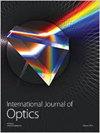Designing an Efficient Emergency Response Airborne Mapping System with Multiple Sensors
IF 1.8
4区 物理与天体物理
Q3 OPTICS
引用次数: 0
Abstract
Multisource remote sensing data have been extensively used in disaster and emergency response management. Different types of visual and measured data, such as high-resolution orthoimages, real-time videos, accurate digital elevation models, and three-dimensional landscape maps, can enable producing effective rescue plans and aid the efficient dispatching of rescuers after disasters. Generally, such data are acquired using unmanned aerial vehicles equipped with multiple sensors. For typical application scenarios, efficient and real-time access to data is more important in emergency response cases than in traditional application scenarios. In this study, an efficient emergency response airborne mapping system equipped with multiple sensors was designed. The system comprises groups of wide-angle cameras, a high-definition video camera, an infrared video camera, a LiDAR system, and a global navigation satellite system/inertial measurement unit. The wide-angle cameras had a visual field of 85° × 105°, facilitating the efficient operation of the mapping system. Numerous calibrations were performed on the constructed mapping system. In particular, initial calibration and self-calibration were performed to determine the relative pose between different wide-angle cameras to fuse all the acquired images. The mapping system was then tested in an area with altitudes of 1000 m–1250 m. The biases of the wide-angle cameras were small bias values (0.090 m, −0.018 m, and −0.046 m in the x-, y-, and z-axes, respectively). Moreover, the root-mean-square error (RMSE) along the planer direction was smaller than that along the vertical direction (0.202 and 0.294 m, respectively). The LiDAR system achieved smaller biases (0.117, −0.020, and −0.039 m in the x-, y-, and z-axes, respectively) and a smaller RMSE in the vertical direction (0.192 m) than the wide-angle cameras; however, RMSE of the LiDAR system along the planar direction (0.276 m) was slightly larger. The proposed system shows potential for use in emergency response systems for efficiently acquiring data such as images and point clouds.一种高效的多传感器应急机载测绘系统的设计
多源遥感数据已被广泛用于灾害和应急管理。不同类型的视觉和测量数据,如高分辨率正射图像、实时视频、准确的数字高程模型和三维景观图,可以制定有效的救援计划,并有助于灾后救援人员的高效调度。通常,使用配备有多个传感器的无人机来获取此类数据。对于典型的应用场景,在应急响应情况下,高效、实时地访问数据比在传统应用场景中更重要。在本研究中,设计了一种配备多个传感器的高效应急机载测绘系统。该系统包括一组广角相机、一台高清摄像机、一台红外摄像机、一个激光雷达系统和一个全球导航卫星系统/惯性测量单元。广角相机的视野为85° × 105°,有利于测绘系统的高效运行。对构建的测绘系统进行了多次校准。特别地,执行初始校准和自校准以确定不同广角相机之间的相对姿态,从而融合所有采集的图像。该测绘系统随后在海拔1000米的地区进行了测试 m–1250 m.广角相机的偏差为小偏差值(0.090 m、 −0.018 m、 和−0.046 m)。此外,沿平面方向的均方根误差(RMSE)小于沿垂直方向的均方误差(0.202和0.294 m、 分别)。激光雷达系统实现了较小的偏差(0.117、-0.020和-0.039 在x、y和z轴上分别为m)和在垂直方向上较小的RMSE(0.192 m) 比广角相机;然而,激光雷达系统沿平面方向的RMSE(0.276 m) 稍大。所提出的系统显示出在应急响应系统中用于有效获取数据(如图像和点云)的潜力。
本文章由计算机程序翻译,如有差异,请以英文原文为准。
求助全文
约1分钟内获得全文
求助全文
来源期刊

International Journal of Optics
Physics and Astronomy-Atomic and Molecular Physics, and Optics
CiteScore
3.40
自引率
5.90%
发文量
28
审稿时长
13 weeks
期刊介绍:
International Journal of Optics publishes papers on the nature of light, its properties and behaviours, and its interaction with matter. The journal considers both fundamental and highly applied studies, especially those that promise technological solutions for the next generation of systems and devices. As well as original research, International Journal of Optics also publishes focused review articles that examine the state of the art, identify emerging trends, and suggest future directions for developing fields.
 求助内容:
求助内容: 应助结果提醒方式:
应助结果提醒方式:


